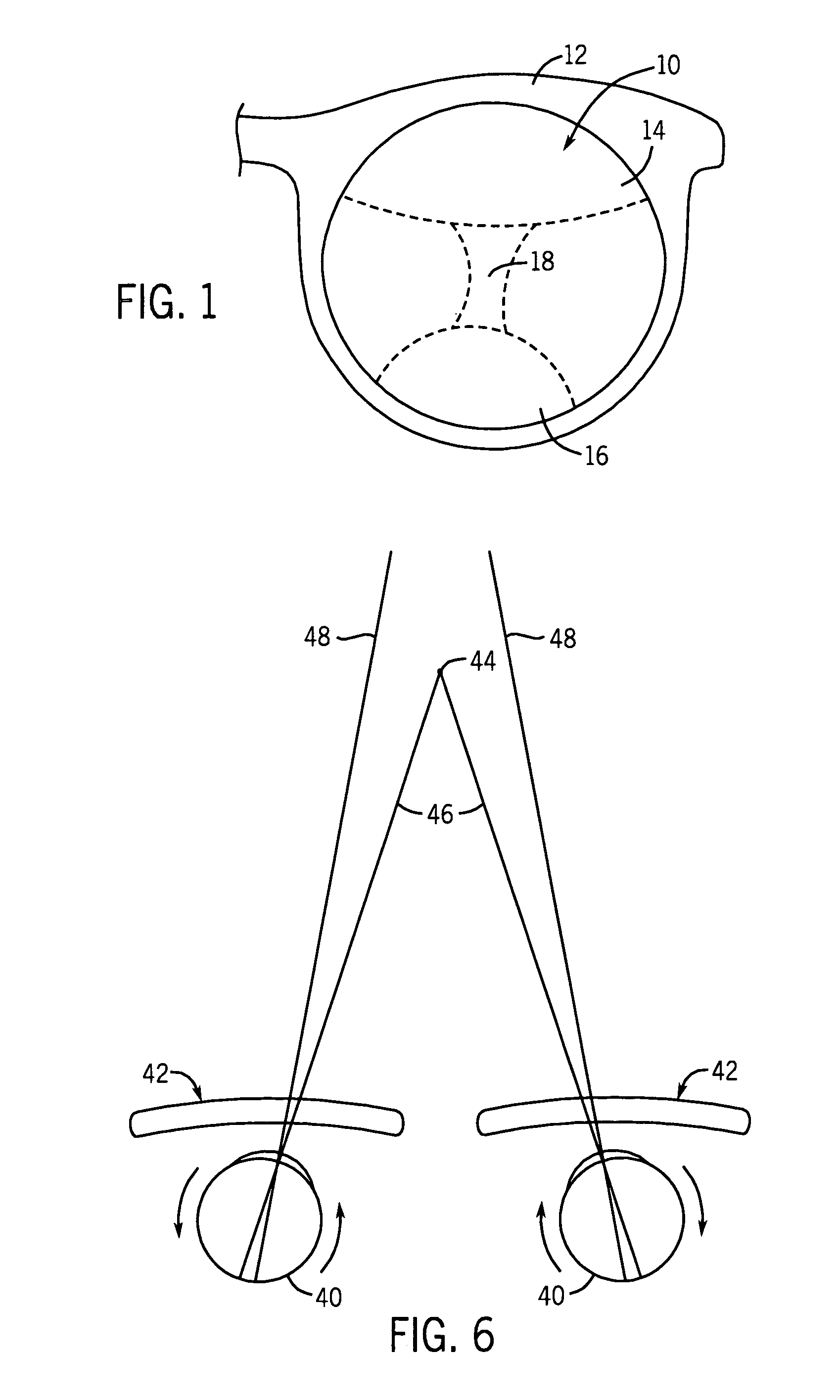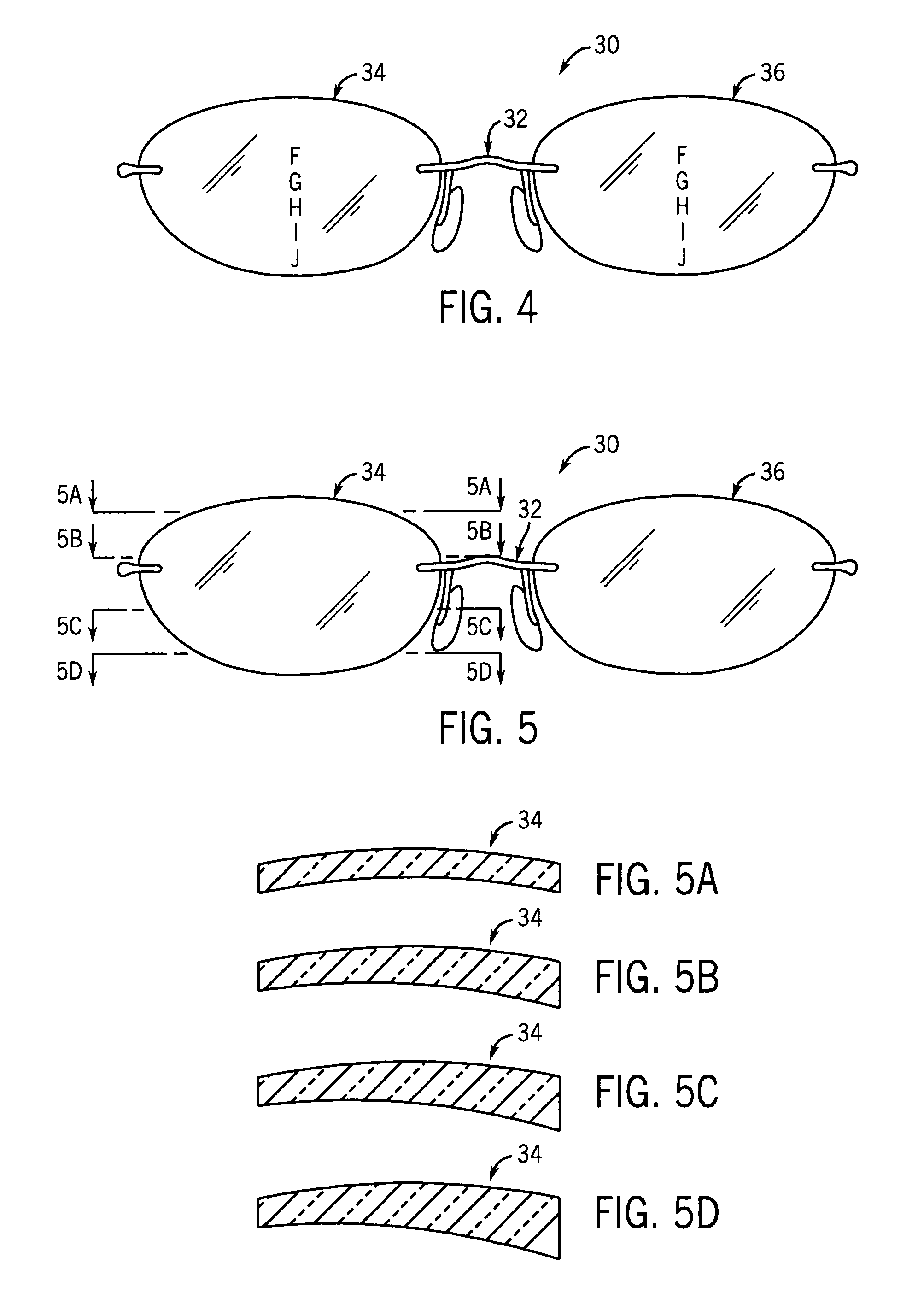Multi-focal ophthalmic lens with base in prism
a technology of ophthalmic lenses and prisms, applied in the field of multi-focal ophthalmic lenses with prism bases, can solve problems such as eye strain
- Summary
- Abstract
- Description
- Claims
- Application Information
AI Technical Summary
Problems solved by technology
Method used
Image
Examples
Embodiment Construction
[0024]The present invention relates to use of base in prism added to multifocal ophthalmic lenses to reduce visual demand to converge at near vision. The added base in prism allows the person to have reduced need to converge when looking through the portion of the lens designed to aid in near vision. Particularly, the amount of prismatic effect is varied from distance correction to near correction.
[0025]In accordance with the invention, a continuous change in add power of a progressive addition lens from a distance portion to a near portion is supplemented with increasing base in prism from the distance portion to the near portion. This reduces the need for the eyes to converge at near, therefore reducing eye strain. The amount of base in prism will vary depending on the add power and the desired amount of decreased convergence needed but will likely always be equal to or greater than 0.50 diopters per lens. In an exemplary embodiment of the invention the amount of base in prism var...
PUM
 Login to View More
Login to View More Abstract
Description
Claims
Application Information
 Login to View More
Login to View More - R&D
- Intellectual Property
- Life Sciences
- Materials
- Tech Scout
- Unparalleled Data Quality
- Higher Quality Content
- 60% Fewer Hallucinations
Browse by: Latest US Patents, China's latest patents, Technical Efficacy Thesaurus, Application Domain, Technology Topic, Popular Technical Reports.
© 2025 PatSnap. All rights reserved.Legal|Privacy policy|Modern Slavery Act Transparency Statement|Sitemap|About US| Contact US: help@patsnap.com



